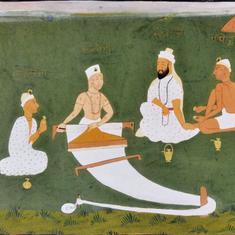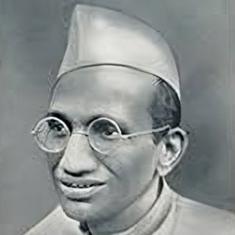On 7 December 1941, Japan came into the war against the United States. This naturally brought in Britain on the side of US, and India, as part of the British Empire, also became involved in the war with Japan. For her defence against Japan, India depended on Singapore as her bastion in the east.
By the surprise attack on Pearl Harbour and the capture of the Philippines by the Japanese, Singapore was considerably weakened. Singapore’s defences faced the sea, with the land approaches in the rear, undefended. Further, the Japanese had organized an elaborate espionage system in Singapore with the help of the local Chinese inhabitants living in the city, who gave up-to-date and accurate information on the day-to-day movements of British and Indian troops. Again, no one then believed that an attack could be mounted on Singapore by land, because of the extraordinarily long lines of communication through an inhospitable country. So, Singapore was unprepared from a land attack by Japanese – the bastion found itself unprepared, and it fell unexpectedly and rapidly.
After the fall of Singapore, the Japanese drive towards Rangoon gained momentum. Rangoon was evacuated on 7 March 1942, and thousands of Indians began their track to India through the difficult jungles of the Arakan. Here, the forethought of the British in building communications became apparent. The fall of Rangoon had brought the war close to us, as Gen. Alexander’s forces withdrew to the Eastern Gates of India, after fighting retreating battles in Burma against overwhelming odds, over such routes which we had helped to build.
Defence measures had, therefore, to be concentrated in India, but full support for the war was lacking because Britain had failed to exercise sufficient effort in getting India to commit herself in the early days. This was unfortunate, as in September 1939, a wave of sympathy for England and against the totalitarian countries and against Hitler, had spread throughout the country, and there was a general feeling that India could have been easily persuaded to declare war against totalitarian aggression. But technically, India was at war when Britain was, and India was deemed committed without her leaders being consulted. It had even provided the troops which had helped delay the first German attack on Paris. The principal political party, the Indian National Congress, which was then fighting for India’s political freedom, felt that as Britain was not prepared to recognize India’s freedom after the war, Indians would come more and more to believe that this was not India’s war despite Japan entering it, and the war reaching the very borders of the country.
It was against this background that, in 1942, Gandhiji launched the Quit India Movement, which later that year turned to overt action. So, the relations between the British and the Congress became further strained.
In retrospect, events appear to have been the natural outcome of the failure to get the cooperation of the Congress leaders, when it was still possible, in the early days of the war.
In spite of these political differences inside the country, events in India moved fast. With Hitler’s invasion of Poland, the army in India was mobilised in September 1939, and Indian troops began arriving in Suez from October 1939 onwards. The role assigned to this force was the Middle East and Africa, but some ancillary units were sent to France to provide transport cover to the British Expeditionary Forces. Among them was Capt Anis Ahmed Khan, who was earlier with us in the Madras Pioneers. During the retreat from Dunkirk, he was taken prisoner and remained in Germany throughout the war. I was disappointed that although we were the first troops to leave India for overseas duty, we did not contact the enemy till 1941, whereas those who left India after us, contacted the enemy almost immediately.
During the Second World War, Indian Army units fought gallantly in France, Italy, Africa, the Middle East, Malaya, Burma and Indonesia, whilst at the same time protecting the North-West Frontier of India and carrying out their role of internal security within the country. These duties necessitated tremendous expansion. In October 1939, the strength of the army was approximately half a million, whilst in October 1944, it rose to over 2 million. Throughout this momentous period, our troops made substantial contributions to the Allied cause in the different theatres of war.
About this time, news reached India of the formation of the Indian National Army (INA), under the dynamic leadership of Subhas Chandra Bose. When Singapore fell on 15 February 1942, some 60,000 Indian troops had joined what was named the ‘Indian National Army’. This was to be the army of free India, with a provisional government under the presidency of Subhas Chandra Bose.
But according to British Military Law, these men had committed the offences of mutiny, desertion and waging war against the king. For them, therefore, it was a very serious step particularly as their comrades, that is men of sister battalions of the same regiment and drawn from the same stock, were winning glory and admiration for their fellow soldiers, British and American, in North Africa, France and Italy.
Perhaps the reason why some of these troops went over to the enemy was because of nationalistic fervour. Were these men right? These soldiers were recruited in the INA under the command of Capt. Mohan Singh, who made his choice from a genuine conviction and was prepared to suffer, and did, in fact, suffer for his beliefs. Further, the personality of Subhas Chandra Bose was overwhelming. But, in Military Law, the offence of mutiny cannot be condoned. This fact is of interest to the future leaders of our army. To new India, the Indian Army can only be a valuable asset if it preserves its loyalty and discipline. This question is of particular interest because there have been talks of independent states. It will equally be an offence if a soldier, in the event of a conflict with a state, prefers to fight for the state to which he belongs rather than to India as a whole.
In December 1942, my name appeared in Indian Army Orders, to attend the Staff Course at the Command and Staff College, Quetta. About the same time, my posting orders came through appointing me to command an infantry battalion. I preferred this posting to an appointment of the staff. “Staff” led to closer contact with senior commanders and gave an insight into higher military thinking. On the other hand, “command” meant association with troops on active device, an experience to which I had been looking forward. I had had ample experience of regimental work; and was now anxious to “command”, particularly under conditions of modern war. So, I opted for “command” in the hope of proceeding with a unit to a theatre of war.
The “command” came on 27 December 1942, of a newly raised battalion, the 6/19 Kumaon Regiment, which was then located at Bannu, on the North-West Frontier of India. The brigade commander felt that the battalion was not in very good shape, and I was given the task of preparing it for war in the shortest possible time. The regiment had good officers, six British and five Indian, the VCOs were men of experience; and the soldiers were young and active.
What was required, however, was coordinated work and hard and intensive training; stress was also to be placed on discipline and firepower, as we had then to learn the special techniques required for conducting operations on the frontier, appreciating that the Pathans had a reputation for springing surprises, that they were good marksmen and very mobile on steep slopes. The Pathans carried merely a rifle and a bit of food. They were tough, used to the terrain and consequently very active. We, on the other hand, were handicapped with heavy boots and equipment and were not so mobile. We thus gave the enemy the advantage of mobility, and freedom to select the point of attack. The Pathans were also very clever with their ambushes, to which the only answer was to keep fully alert. An example of alertness is given in advance through Shakti Tangi at a time when no enemy had been seen. The intelligence officer of the South Wales Border Regiment spotted a cleft in the very close horizon, through which he could see daylight. Suddenly, daylight was blotted out, and he sensed that it was the enemy.
As the men of the South Wales Borders took cover, there was a burst of enemy fire.
The North-West Frontier Province (NWFP) has six frontier districts of the Punjab compared to six tribal areas administered directly by the Government of India. On the other side of the NWFP was the buffer state of Afghanistan, separating the two empires, the Russian and the British. The Durand Line, between Afghan territory and tribal areas which the British administered, bordered a belt of territory in which some tribes were vaguely regarded as British and others as Afghans; but neither were wholly subject to the authority of either power, though they were treated as British ‘protected’ persons. The tribes could thus play off the Amir of Afghanistan against the British, while the Amir intrigued with them to keep the British busy. People living in these areas were, therefore, very “unsettled”.

Excerpted with permission from Commanded by Destiny: A General’s Rise from Soldier to Statesman, by SM Shrinagesh, Penguin India.










